Jul 01, 2024
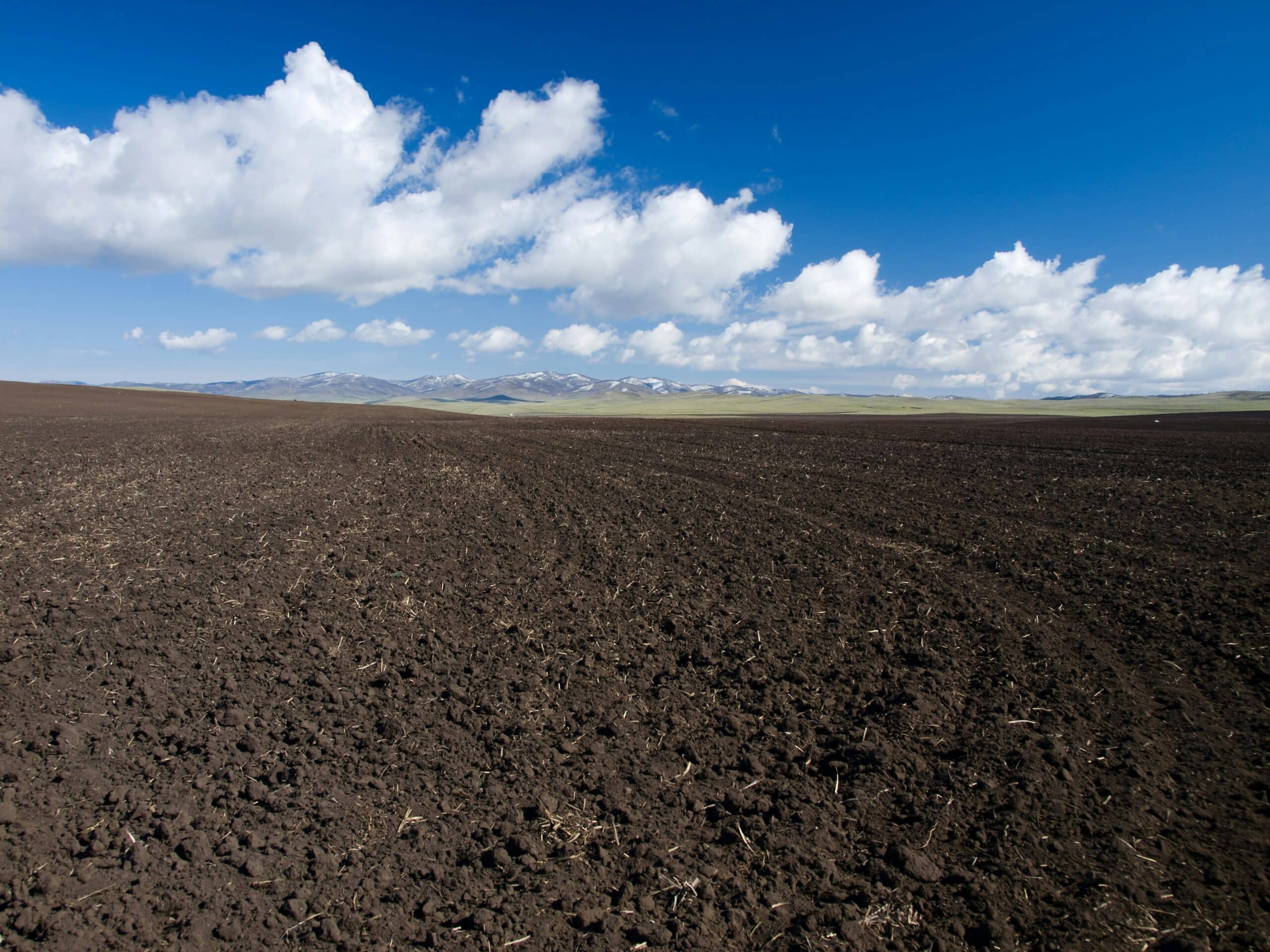
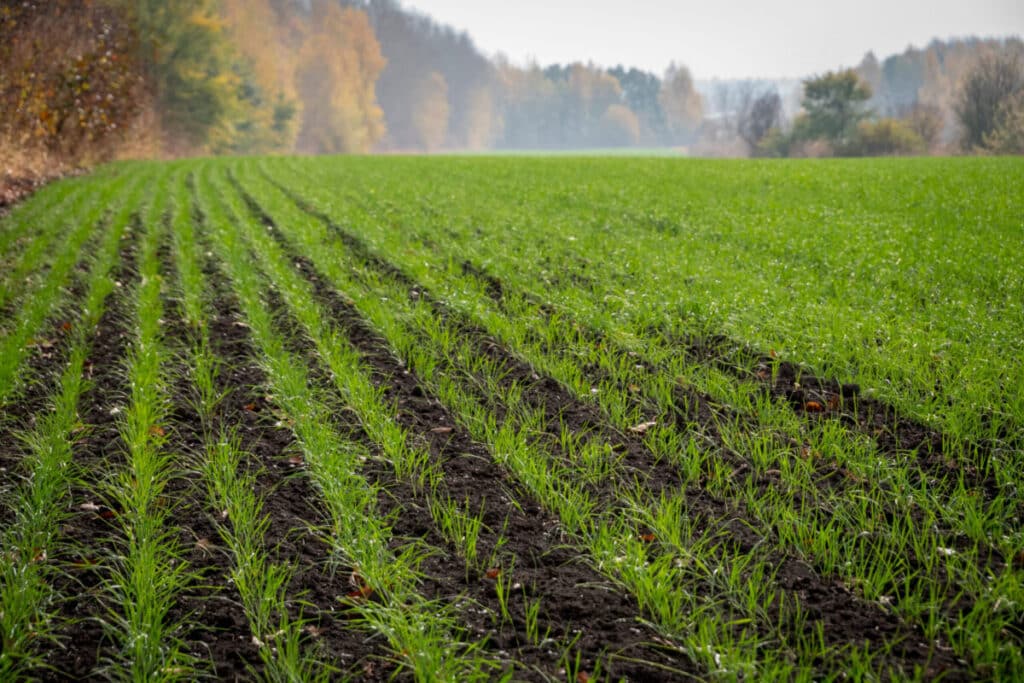
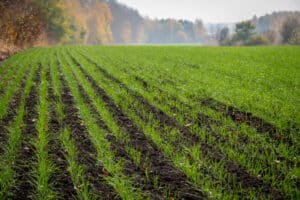
Russia and Ukraine are two of the world’s top 10 producers of wheat. Given the war, sanctions, fertilizer scarcities, and severe drought, 2022 has been the slowest planting season for spring wheat since 1996. The harvest potential in the US alone has fallen by 25%. Given the overall scarcities, many growers are considering transitioning from other crops to winter wheat this fall to capitalize on the shortage.
While this is a great opportunity for winter wheat growers to receive a substantial return on their investment, winter wheat should not be planted blindly. A strategic plan for winter wheat seeding can be the difference between capitalizing on a shortage and being a part of a shortage statistic. Wheat growers need solutions to aid in uniform germination and stand establishment, including in their seed treatment.
By pairing traditional sowing practices with an innovative seed treatment, like PhycoTerra® ST, growers can increase crop yield and ROI on winter wheat.
Winter wheat is relatively similar to spring wheat. The main difference is winter wheat can withstand freezing temperatures for extended periods. Winter wheat also needs to be hardened in colder temperatures. The cold acclimation, which starts when temperatures drop below 50 degrees Fahrenheit, triggers the reproductive stage. Without the cold weather, winter wheat will not produce seeds.
Growers need to invest in seed treatment to support soil microbes and germination, as well as abiding by winter wheat sowing best practices.
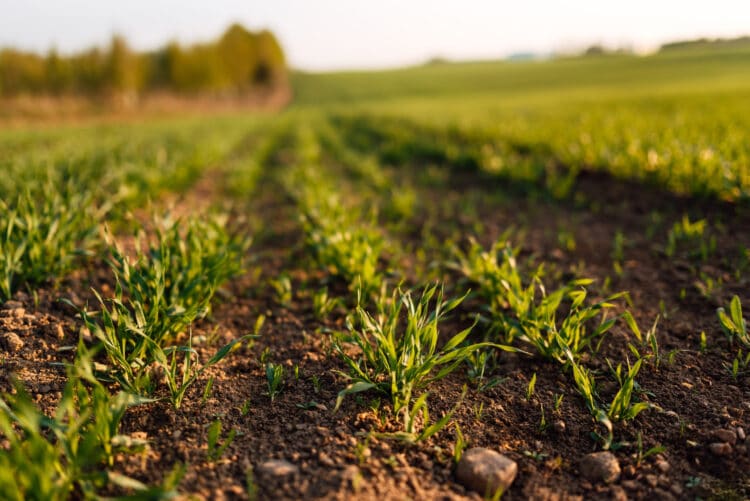
Image 1: Winter wheat planted early fall emerges with strong establishment soon after germination, just in time for the crop to go dormant during freezing temperatures of the winter season.
It’s better to seed early than late to enable winter wheat to grow a well-developed crown. Most growers throughout the High Plains seed September 1st – 15th. Fall grazing seeds are normally planted by mid-August in southern states. While these general dates are helpful, planting dates can vary by location.
Contact your local agronomist to confirm the correct planting dates for your zone.
Western Winter Wheat Initiative found the most important factors for a successful winter wheat crop include seeding early, heavy, shallow, and using seed treatments.
Seed early instead of late as it enables winter wheat to grow a well-developed crown.
Seed appropriately based on soil temperature and moisture for a denser, more unified stand. Keep in mind the seedling survival rate is 70%.
Seed shallow as soil moisture is often depleted come fall. Sow seeds one to one- and one-half inch in the soil for moisture retention, germination, and rapid emergence. Seeds planted at this depth can reduce seedling emergence and crop stand.
A seed treatment plan will protect seeds planted too shallow, too deep, too late, or that are living in drought conditions. Seeds treated with fungicide and insecticide improve stand establishment and reduce disease.
It’s also recommended growers conduct a soil sample to avoid over or under applying nutrients. This sample can be taken as late as one month before planting.
Another important component of growing any crop successfully is soil health, which is greatly determined by how healthy the soil microbes are. There are billions of soil microbes living in each teaspoon of soil.
When your soil microbes are awake and properly fed, they improve your soil quality, water holding capacity, optimize NPK availability, support post-harvest residue management, and boost crop yield and overall ROI. Many growers never experience any of these benefits because 75% of those microbes are starving, which causes dormancy.
With a crop like winter wheat planted just prior to a season as volatile as winter, and in extreme drought conditions this year, it’s important to do everything you can to prepare your crop for success.
Growers need to invest in seed treatment to support soil microbes and germination, as well as abiding by winter wheat sowing best practices.
Seed treatments support the spermosphere, a microbial layer around the seed, to enhance germination and early plant development. By adding a high-quality carbon source to seed treatment, growers can supercharge spermosphere function.
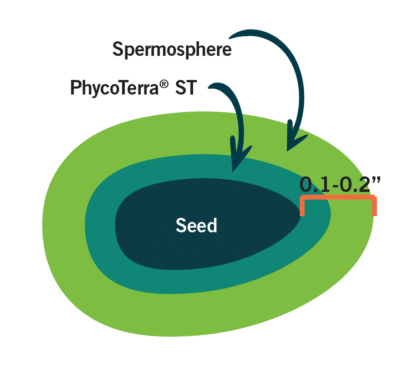
Figure 1: By adding PhycoTerra® ST to the seed, a high-quality carbon source is delivered to the spermosphere to help feed the beneficial microbes in the zone of the soil surrounding the germinating seed.
Nitrogen (N) is the second most yield-limiting factor, after soil moisture in rolling plains and high plains) for winter wheat. By adding PhycoTerra® ST to your current winter wheat seed treatment, seed, and soil microbes will be able to make the most of your nutrient application. Increased nutrient uptake leads to higher crop yields and better ROIs.
An active, well-fed microbial community can help winter wheat withstand drought periods – an important benefit to a seed whose yield is heavily dependent on soil texture and structure. Due to the roots created by fungal soil microbes, and the glue-like coating created by bacterial soil microbes, growers who use biostimulants or carbon products will enhance the chances of survival of their winter wheat crop, regardless if the field is supported by rainwater or irrigation.
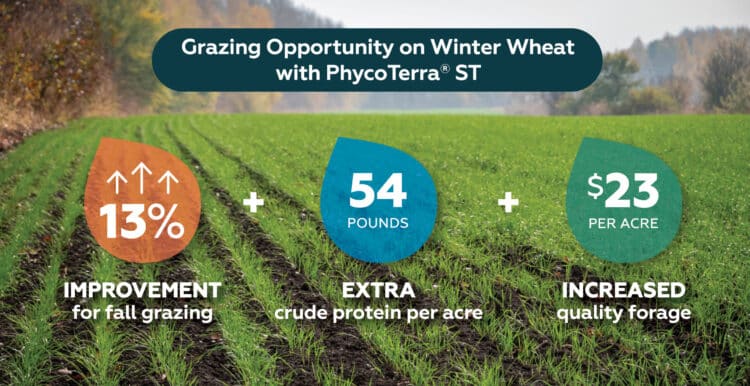
Input solutions can improve soil structure and create an environment to support germination, stand establishment, and early vigor. We found a 13% improvement in fall grazing for stand and biomass on a potential 38-bushel wheat crop (in northeast dryland yield) providing an extra 54 pounds of crude protein per acre in grazing forage when adding PhycoTerra® ST to an existing seed treatment program.
At $140 per ton of quality forage, PhycoTerra® ST delivered an increased value of $23 per acre. The accelerated growth and quick turnaround time before loss risk occurs allow fall grazing to maximize winter wheat overall output.
Winter wheat can be a beneficial crop to sow for many reasons. The root structure creates erosion prevention and suppresses weeds. The plant also scavenges excess nutrients and organic matter. This year, increased ROI will be added to the long list of winter wheat benefits due to worldwide scarcities.
As of April, US farmers were set to plant the lowest spring wheat acreage in five years, coming off one of the worst ever crop years. There are big opportunities for those able to sow, grow, and harvest or graze winter wheat successfully.
This will be especially true for growers who understand the importance of soil health. Soil microbes will give growers a leg up on the seed’s survival and maturity. Make the most of your winter wheat harvest, and support the seed and soil microbial health via a carbon-rich seed treatment like PhycoTerra® ST.
Ready to increase your winter wheat ROI this season? Fill out our contact form to get started.